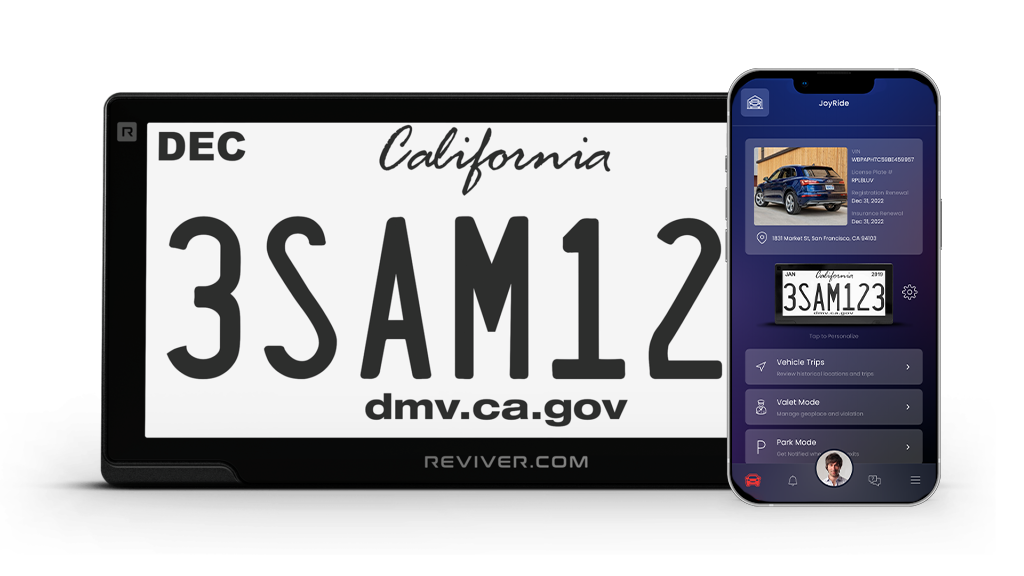California Has Legalised The Use Of Digital License Plates – But What Do They Do?
Drivers in California will be able to fit their cars with digital license plates after the California Department of Motor Vehicles (the DMV) has approved the use of this technology. The process of this being legalised began in 2013, but only now is it being confirmed for a full rollout.
Before this, only 0.5% of vehicles in California were eligible for digital plates – that comes to around 175,000 – but now all of the 40 million cars in the state will be allowed to change their standard plates to digital plates.

The leader behind these digital plates, Reviver, is keen to put their plate on every car in California:
“Californians are known to be early adopters of emerging innovative technologies. We welcome new opportunities to automate and integrate as many parts of our lives as possible, enabling us to streamline mundane tasks and stay connected. Our cars are no exception,” said Reviver co-founder and Chief Strategy Officer Neville Boston.
But what actually is a digital plate, and what benefits does it give the driver?
Well, the RPlate from Reviver allows extra personalisation through a number of visual changes as well as connections which allow vehicle location and a number of other security features in case something happens to the vehicle. Currently there are two versions of this product: a battery-powered version which partners with a subscription of $19.95 per month, and one that connects directly to the car’s power source, which is only available to commercial businesses and requires a $24.95 per month subscription.
California is the only state that is allowing this for private users currently, but a number of other states including Michigan, Arizona, and Texas allow commercial use of these products. 10 other states are also slowly looking to adopt this technology in the near future.

